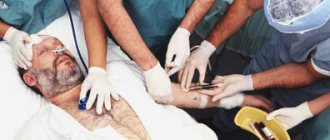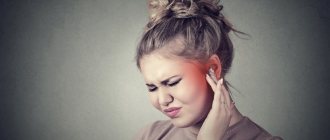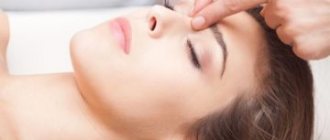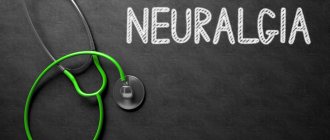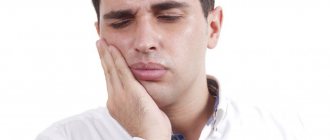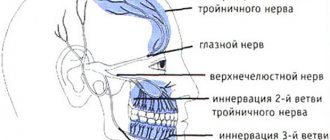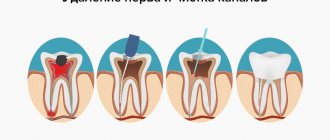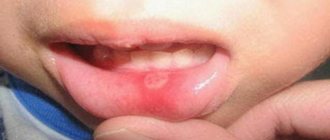Trigeminal neuritis is a dangerous disease. This is not a simple inflammatory process, sometimes accompanied by unbearable attacks of pain. Neuritis is characterized by structural changes in nerve fibers, which lead to motor disturbances and loss of sensitivity.
There are twelve nerves running through the human skull. The two trigeminals, located on both sides of the face, are the largest. They are divided into three branches: ophthalmic, maxillary and mandibular. Defeat can affect either one of them or all of them at the same time. Basically, the nerve on only one side of the face becomes inflamed.
Causes
Establishing the cause of neuritis of the facial trigeminal nerve is not an easy task even for a neurologist with many years of experience. Only in some cases is it possible to accurately determine the causative factor of this pathology. In other cases, treatment is limited solely to extinguishing the inflammatory process.
Among the causes of inflammation of the trigeminal nerve identified in a number of cases are:
- Common infectious diseases: influenza, syphilis, tuberculosis.
- Inflammation of the throat, sinuses, eye sockets, middle ear, teeth or gums.
- Received injury.
- Toxic poisoning of the body.
- Tumor formation near a nerve.
- Hypothermia.
- Allergic reaction.
- Atherosclerotic plaques.
- A sharp drop in immunity (often accompanied by activation of the herpes virus).
Additional Information. The disease is usually divided into two types: primary and secondary. Primary develops against the background of impaired blood supply to nerve fibers, and secondary is considered to be a complication of various chronic pathologies.
Diagnosis of lesions of the trigeminal nerve
DIFFERENTIAL DIAGNOSIS OF LESIONS IN VARIOUS DEPARTMENTS OF THE TRIGEMINAL, FACIAL, GLOSPHARYNGEAL NERVES AND AUTONOMIC GANGLIA OF THE FACE
Damage to the trigeminal nerve system
Trigeminal neuralgia is predominantly of central origin. Causes: vascular and endocrine metabolic disorders, allergic conditions. It is more often observed in women aged 40-60 years.
Diagnostic signs: paroxysmal (from several seconds to several minutes) pain of a burning, shooting, tearing, cutting, stabbing, “electric shock” nature and accompanied by a spasm of the facial muscles on the affected side (Fig. 7).
In 30-35% of patients, the development of pain is preceded by paresthesia in the teeth (one or more), less often in the jaws. Their duration ranges from several days to 1-1.5 years. As a rule, pain occurs in the area innervated by the II and III branches of the trigeminal nerve.
Autonomic symptoms: hyperemia of the skin of the face and conjunctiva of the eyes, swelling of the soft parts of the face, rhinorrhea, lacrimation and salivation. With a long duration of the disease - dryness and flaking of the facial skin, early graying and hair loss on the front of the head, atrophy of the facial muscles.
Differential diagnostic sign: the presence of trigger, or allogeneic, zones (small areas around the mouth and gums, the mechanical and thermal irritation of which provokes pain).
Trigeminal neuralgia is predominantly of peripheral origin. This type includes odontogenic neuralgia, dental plexalgia, postherpetic neuralgia, neuralgia of the nasociliary, auriculotemporal and lingual nerves, and semilunar ganglion lesion syndrome.
Odontogenic neuralgia . Causes of occurrence: traumatic tooth extraction, entry of filling material into the mandibular canal, pulpitis, alveolitis, periodontitis, inflammation of the maxillary sinus, galvanism caused by metal dentures, poor-quality dentures, malocclusion, surgical interventions on the jaws, gingivitis and other periodontal diseases, infection, intoxication, psychotrauma, ischemic process in the vertebrobasilar system.
Diagnostic signs: long-term (from several hours to several days), persistent, periodically exacerbating and gradually subsiding pain in the zone of innervation of the II and III branches of the trigeminal nerve. The pain is accompanied by disorders of the autonomic nervous system, manifested by hyperemia, swelling of the affected area, as well as lacrimation and salivation. Pain can continue for a long time even after the elimination of the main process that caused neuralgia.
Dental plexalgia . Causes: the same as for odontogenic neuralgia.
Diagnostic signs: constant pain in the gums, teeth; in some patients there is a repercussion of the pain syndrome on the healthy side. Pain can decrease with eating and increase under the influence of emotions, adverse meteorological factors and hypothermia, radiate along the second branch of the trigeminal nerve and be accompanied by autonomic symptoms resulting from connections of the plexus with the autonomic ganglia (pterygopalatine and superior cervical sympathetic nodes). In this case, there is no pain at the exit points of the trigeminal nerve.
Bilateral dental plexalgia is a consequence of unilateral dental plexalgia. For differential diagnosis, esthesiometry is used.
Postherpetic neuralgia. Causes: viral infection, inflammatory process in the membranes of the brain with damage to the semilunar node.
Diagnostic signs: after illness, extremely painful burning pain, itching and swelling of the diseased half of the face appear at times. Then small bubbles appear at this place. Headaches and facial pains are diffuse.
Early postherpetic neuralgia lasts up to 6 months, late - from 6 months to several years.
Differential diagnostic signs: pain occurs spontaneously, lasts for hours, periodically intensifies, is often localized in the zone of innervation of the first branch of the trigeminal nerve, and may subside. There are no trigger zones or points.
Neuralgia of the nasociliary nerve. Cause: inflammation of the paranasal sinuses.
Diagnostic signs: attacks of excruciating pain in the area of the eyeball, eyebrow and corresponding half of the nose. The pain occurs at night and is accompanied by severe autonomic disorders of the nervous system - profuse lacrimation, swelling on the affected side of the nasal cavity, and discharge of liquid secretions from the nose. Changes in the anterior part of the eye in the form of keratoconjunctivitis, pain on palpation of the inner corner of the eye, and herpetic rashes on the skin of the forehead and nose may be observed. Long-term remissions are characteristic.
Dental formation
Differential diagnostic signs: the disease often begins after 30 years of age, is characterized by a significant duration of pain (up to a day or more), and persistent clinical manifestations. The intensity of pain depends on the etiological factor. During an attack, a neurotopic reaction of the pupils is observed. There are no trigger zones. Often the disease occurs against the background of inflammatory changes in the paranasal sinuses. At the time of the attack, after lubricating the anterior nasal cavity with a 5% solution of cocaine with the addition of a 0.1% solution of adrenaline at the rate of 5 drops per 5 ml of cocaine, the pain disappears.
Neuralgia of the auriculotemporal nerve (Frey's syndrome) . Causes: nerve damage during removal of mandibular molars and other traumatic injuries.
Diagnostic signs: burning, aching, sometimes throbbing pain in the temple, inside the ear, the anterior wall of the external auditory canal, especially in the temporomandibular joint. They often radiate to the lower jaw. The attack is accompanied or manifested in isolation by skin hyperemia in the parotid-temporal region and hyperhidrosis in the area of innervation of the auriculotemporal nerve. In some cases, the development of hyperemia and increased sweating is preceded by paresthesia. Increased salivation is noted. Painful phenomena occur mainly when eating, smoking, general overheating of the body, and neuropsychic stress. The disease usually develops against the background of a functional disorder of the nervous system.
Neuralgia of the lingual nerve. Causes: chronic infection (tonsillitis, tonsillitis, flu, etc.) or intoxication, prolonged irritation of the tongue by a prosthesis, sharp edge of a tooth.
Diagnostic signs: attacks of acute pain in the anterior third of the tongue. Often pain is accompanied by sensitivity disorders such as hyperesthesia on the corresponding half of the tongue, which leads to impaired pain and taste sensitivity. An attack of pain can be provoked by any movement of the tongue.
Chronic pulpitis
Syndrome of lesion of the semilunar node. Causes: infection, intoxication, trauma, tumor, vascular lesions.
Diagnostic signs: damage to the semilunar ganglion of any etiology is characterized by prolonged, dull, aching pain radiating to the affected half of the head. In this case, sensitivity disorders are observed in the zone of innervation of all branches (usually I and II) of the trigeminal nerve. Keratitis and conjunctivitis can be complications of damage to the semilunar node. In the case of infectious etiology, rashes of vesicles filled with serous fluid appear in the innervation zone of the first branch of the trigeminal nerve (signs of herpes zoster).
Differential diagnostic signs of neuralgia of predominantly peripheral origin:
1. Initially, pain occurs where the primary pathological process is localized (tumors, foci of inflammation, injuries, etc.).
2. Attacks of trigeminal neuralgia are often preceded by prolonged pain in the area of innervation of the affected branch of the trigeminal nerve.
3. Prolonged paroxysmal pain gradually intensifies and then weakens.
4. Pain may be limited to the area of branching of individual nerves within the main branches of the trigeminal nerve, dental plexuses or their branches, etc.
5. Novocaine and alcohol novocaine blockades provide a therapeutic effect only for the period of action of novocaine; in the future, as a rule, the pain intensifies.
6. Analgesics have a noticeable therapeutic effect. Drugs of the carbamazepine group either slightly reduce pain or are ineffective.
7. The clinical picture of neuralgia may vary depending on the state of the underlying pathological process.
8. Elimination of the cause of trigeminal syndrome often does not lead to the elimination of neuralgia.
Lesions of the trigeminal nerve nuclei. Causes of occurrence: circulatory disorders in the vertebrobasilar system due to atherosclerosis, hypertension (or their combination), as well as pathology of the cervical spine.
Diagnostic signs: prolonged attacks of sharp pain that cannot be treated with anti-convulsants such as carbamazepine. Pain develops against the background of atherosclerosis, hypertension, or a combination thereof. The examination reveals signs of cerebral circulatory insufficiency. There are onion-type sensitivity disorders on the face. Some patients may experience alternating syndromes.
Impaired motor function of the trigeminal nerve. Causes of occurrence: in case of impaired motor function - tumors, circulatory disorders, neuroinfection (tick-borne encephalitis), amyotrophic lateral sclerosis, syringobulbia, trauma, in case of motor portion irritation syndrome - neurotic conditions, tetanus, rabies, difficult eruption of wisdom teeth, submasseterial phlegmon, jaw injuries .
Diagnostic signs: in case of impaired motor function - paralysis of the masticatory muscles on the affected side. When opening the mouth, the jaw moves towards the affected muscle. If the process lasts a long time, then atrophy of the masticatory and temporal muscles develops, visible to the eye and determined by palpation of these muscles during movement of the lower jaw. In case of bilateral damage to the motor portion of the trigeminal nerve, the movements of the lower jaw are limited. The jaw hangs, the patient cannot close his mouth.
With motor portion irritation syndrome, the disease manifests itself as trismus, which is characterized by a sharp contraction of the temporal and masticatory muscles. A spasm of the chewing muscles occurs. The movements of the lower jaw are sharply limited or absent, the teeth are tightly clenched, eating is difficult, speech is impaired, there are breathing disorders, and neuropsychic tension is pronounced. Prolonged trismus leads to exhaustion of the patient.
Trigeminal neuritis. Causes: infection, intoxication, mechanical, ischemic and metabolic disorders.
Diagnostic signs: pain, paresthesia, impaired sensitivity in the area of innervation of the affected branches of the trigeminal nerve, and in case of neuritis of the mandibular nerve, motor disorders.
Neuritis of the superior alveolar nerve . Causes: chronic pulpitis and periodontitis, trauma (complicated tooth extraction), sinusitis.
Diagnostic signs: anesthesia and hypoesthesia of the gums of the upper jaw, as well as the adjacent area of the buccal mucosa. The electrical excitability of the pulp in the teeth of the affected side is reduced or absent.
Neuritis of the inferior alveolar nerve. Causes of occurrence: infection, trauma to the lower jaw (removal of filling material beyond the apex, tooth extraction, conduction anesthesia, etc.).
Diagnostic signs: aching pain, a feeling of numbness, loss or decrease in all types of sensitivity in the teeth of the lower jaw, in the chin and lower lip, decrease or absence of electrical excitability of the dental pulp on the affected side.
Neuritis of the lingual nerve. Causes: trauma, infection.
Diagnostic signs: pain and paresthesia in the 2/3 corresponding half of the tongue, decreased tactile sensitivity and absence of pain sensitivity in this area.
Neuritis of the buccal nerve. Cause of the disease: the same as with neuritis of the lingual nerve.
Diagnostic signs: sensitivity disorders of the mucous membrane of the cheek and skin of the corner of the mouth.
Neuritis of the anterior palatine nerve . Cause of occurrence: injury.
Diagnostic signs: aching pain with a burning sensation and dryness in half the palate, decreased sensitivity in this area.
Symptoms of trigeminal neuritis
Trigeminal neuritis has one obligatory symptom - burning pain along the branches of the nerve. Most often, short-term attacks of intense intensity occur. Sometimes severe pain continues constantly. In this case, treatment is especially difficult. Additionally, the patient develops secondary signs of the disease.
- redness of the skin or rash in the area of inflammation;
- tearfulness;
- runny nose;
- excessive salivation;
- impaired mobility or spasms of the masticatory muscles;
- sweating;
- slight increase in temperature;
- loss of sensitivity in the affected area of the face;
- dullness of hearing and vision;
- swelling at the site of the lesion.
Additional Information. Trigeminal neuritis can be triggered by touching the face, jaw movement, bright light or sound, cold or hot food, or a sharp turn of the head. There are so-called trigger zones on the face, the impact of which causes an attack.
Step-by-step diagnostic procedure
There are no special diagnostic methods for identifying neuritis, so a clinical diagnosis is made based on complaints and physical examination of the patient .
In this case, the doctor excludes the presence of other diseases with similar symptoms. First, the specialist collects a complete medical history of the patient, after which he conducts a physical examination.
How to diagnose inflammation of the trigeminal nerve? With trigeminal neuritis, specific pain appears, accompanied by a number of unusual symptoms:
- numbness of the facial skin;
- deterioration of vision and hearing;
- dysfunction of facial muscles, including nervous tics;
- dizziness.
How to determine the causes of inflammation of the trigeminal nerve of the face? To determine the cause of neuritis, laboratory tests and instrumental examinations are performed as part of additional diagnostics.
What does the doctor pay attention to?
When collecting anamnesis, suspicion of neuritis appears when:
- the patient had previously suffered traumatic brain injuries;
- the patient was exposed to a neurotropic infection;
- the person has caries;
- the patient complains of attacks of pain localized along the innervation of the trigeminal nerve.
During a physical examination for neuritis, the doctor pays attention to the duration and nature of the pain syndrome.
With inflammation of the nervous tissue, attacks last up to 2 minutes and intensify with palpation, conversation, and muscle movement. At the same time, the patient does not have a neurological deficit, and little time passes between attacks.
Additional Research
To establish the reason why the trigeminal nerve is inflamed, the following diagnostic methods are used:
- Laboratory tests: general analysis of urine and blood . If the nerve fibers become inflamed as a result of infection, the level of leukocytes in the blood rises. Thanks to this technique, sinusitis and dental diseases are detected.
- Magnetic resonance and computed tomography of the head . The pictures show the condition of the nerves and blood vessels. The latter can put pressure on the trigeminal nerve, causing inflammation and pain. In addition, MRI and CT scans detect the presence of tumors.
- X-ray of the head, mouth, and sinuses. Allows you to identify the source of infection.
- Angiography using contrast . Allows you to identify vascular abnormalities and the state of blood flow if there is a risk of compression of the trigeminal nerve by large arteries.
Diagnosis of the disease
In many cases, a specialist is able to diagnose trigeminal neuritis during the first examination. But to clarify the diagnosis or the reasons for the development of pathology, some tests may be required:
- electroneurography;
- CT scan;
- Magnetic resonance imaging;
- electromyography;
- blood test for the presence of the virus and the state of immunity;
- dental x-ray;
- panoramic shot of the jaws.
In order to understand the root of the problem and completely eliminate it, a neurologist can refer the patient for examination to other specialists: an infectious disease specialist, an immunologist, a dentist, an ENT specialist, an ophthalmologist, an allergist.
Note! Pathologies of the trigeminal nerve are characterized by a high degree of difficulty in finding the causes. In view of this, in most cases, treatment is aimed only at relieving pain and inflammation and preventing re-exacerbation. And a complete cure is rarely possible.
Diagnosis of trigeminal neuralgia in a child
To clarify the diagnosis, the neurologist prescribes consultations with related specialists and instrumental studies:
- examination by an ENT doctor is necessary to exclude a chronic sluggish process in the maxillary or frontal sinus, which can cause neuropathic pain in the area of innervation of the trigeminal nerve;
- examination and sanitation of the oral cavity by a dentist is carried out to exclude an odontogenic cause of the disease.
If, after eliminating all possible causative factors, the severity of symptoms does not decrease, additional studies are carried out and a consultation with a pediatric neurosurgeon is prescribed:
- Electroneuromyography allows you to detect and localize nerve damage;
- Cerebral angiography is performed to detect the area of nerve compression by a passing vessel.
Treatment of the disease
As for how trigeminal neuritis is treated, there is no single scheme. Most often in such cases, drugs from the following groups are used:
- painkillers;
- anticonvulsants;
- anti-inflammatory;
- biostimulants;
- vitamins (in particular, group B).
Note! Most often, the anticonvulsant drug Carbamazepine is the mainstay in the fight against painful attacks. The course of treatment is about two months. It cannot be used during pregnancy and diseases of blood vessels and heart; it has a strong effect on the kidneys and liver.
In order to alleviate the patient’s condition, as well as speed up recovery, it is customary to additionally prescribe physiotherapeutic procedures. Among them, the most often used are acupuncture, darsonvalization, ultraviolet and infrared radiation, ultrasound, mud and paraffin lotions.
In particularly severe cases, when conservative treatment is ineffective, a specialist may prescribe the patient an alcohol-procaine blockade, as well as radiotherapy.
Note! If the classic approach to treating the trigeminal nerve does not bring the desired effect, there is only one option left - surgery. Either an operation called Janetta is performed, aimed at diverting blood vessels from the nerve, or rhizotomy - cutting the nerve.
Warming up can have a positive effect during the treatment of the trigeminal nerve. To do this, use bags of hot buckwheat or salt, as well as boiled eggs. Massage can alleviate the patient’s condition and speed up the elimination of inflammation by improving blood circulation in the affected area. The rules for its implementation will be discussed further. The combination of massage and exercise therapy is necessary for partial paralysis that causes distortion in the face.
The advice of traditional medicine deserves special attention. For neuritis and neuralgia of the trigeminal nerve, rub black radish juice and fir oil into the skin covering it, make a compress from marshmallow infusion, and rinse your mouth with marshmallow and chamomile infusion. Drinking birch sap and washing with it helps a lot.
Treatment of trigeminal neuropathy
Treatment of trigeminal neuropathy includes the prescription of anti-inflammatory drugs, B vitamins (riboflavin, thiamine, cyanocobalamin), and, if indicated, antihistamines, antibacterial and antiviral agents. To improve neurometabolic processes, drugs such as nootropil, Cerebrolysin, Actovegin, Sermion, and nicotinic acid are prescribed. A good effect is observed with physiotherapeutic influence: ultraviolet irradiation, UHF, phonopheresis with lidocaine, diathermic currents, etc. Acupuncture reflexotherapy sessions can bring relief. To relieve pain and improve general well-being, patients receive analgesics (analgin, baralgin, ketorol), sedatives (phenazepam, Corvalol, motherwort, valerian, etc.).
Read also Anti-NMDA receptor encephalitis - epidemiology, symptoms, diagnosis
Treatment in most cases is carried out on an outpatient basis. If conservative therapy is ineffective and there is a need for inpatient treatment of diseases that cause neuropathy (neuralgia) of the trigeminal nerve, patients are hospitalized. If necessary, patients undergo surgery.
Eliminating the cause
The most difficult task of the attending physician is to find and eliminate the main cause of the development of inflammation of the trigeminal nerve. To do this, he applies the necessary diagnostic methods. If it can be established, additional therapy will be prescribed. It may be necessary to involve other specialists. What might such treatment include?
- Antiviral drugs if the neuritis is infectious in nature.
- Medicines against the herpes virus and to boost immunity if this virus is detected.
- Treatment by a dentist if a problem with teeth or gums is identified.
- Sedatives and tranquilizers for problems with the nervous system.
- Antibiotics if necessary to kill bacteria.
- Vasoactive drugs for vascular restoration.
- Cortecosteroids if the cause is an allergic reaction.
- Surgery if tumors or adhesions are detected.
Treatment Goals
To summarize, the main goals of treatment for trigeminal neuritis are:
- anesthesia;
- relieving inflammation;
- combating attacks and preventing new ones;
- relaxation of the nervous system;
- increasing immunity;
- restoration of muscle reactions and the passage of nerve impulses.
Note! If neuritis is untimely or incorrectly treated, the following consequences are possible: nerve paralysis, involuntary movements of the facial muscles, eye problems (dryness, atrophy of the upper eyelids, loss of vision).
What is it and the ICD-10 code
Trigeminal neuritis is a neurological disorder characterized by inflammation and pain in the area innervated by the branches of the fifth pair of cranial nerves.
The disease is typical for people between 30 and 40 years old . People with multiple sclerosis are at risk.
Unlike neuralgia, neuritis is always accompanied by swelling, while trigeminal neuralgia is an irritation of the nerve endings and can progress without symptoms of inflammation. In addition, neuralgia does not cause changes in the structure of neuron fibers.
With the development of neuritis, inflammation affects the inner part of the trigeminal nerve, which can lead to a violation of its integrity. Therefore, the patient has a disorder of sensitivity and motor skills.
The disease according to the ICD-10 classification received code G50 . The trigeminal nerve is paired, so when the pathology develops, the patient experiences shooting attacks of pain on one side of the face.
When the pain subsides, the patient feels numb. In some cases, paralysis or muscle spasm occurs.
Massage and gymnastics
Massage in the treatment of trigeminal neuritis improves blood circulation in the problem area, accelerating the process of cell restoration. In addition, through it, they achieve normalization of muscle tone, disturbed in the process of changes occurring. How is massage performed?
The patient sits up and throws his head back. It is important that he is completely relaxed. First, the massage therapist works the sternocleidomastoid muscle with light movements. Then it gradually rises, gently affecting the parotid area. And at the end, the face is massaged - first the sore side, and then the healthy one. In this case, the massage therapist will maximally influence the exit points of the branches of the trigeminal nerve. The entire session takes no more than 15 minutes. Usually 10 or 14 sessions are prescribed.
Facial gymnastics helps a lot in restoring muscle function after suffering from neuritis. It should be performed while sitting in front of a mirror and carefully ensuring that symmetry is maintained in every movement. The listed exercises must be performed daily, perhaps several times.
- Tilt your head forward and back.
- The head is tilted to the sides, if necessary, with the participation of another person.
- The head is turned to the sides.
- They purse their lips together and part them in a smile.
- Inflate and forcefully deflate the cheeks.
- Retract both cheeks and relax.
- They move air from one cheek to the other several times.
- They open their eyes and close their eyes with effort.
- They press their palm to their forehead and, without moving it, try to raise their eyebrows.
Each exercise is repeated 6-8 times. In the pauses between performing each of them, you need to completely relax your facial muscles.
The patient should also try to lay his head on the affected side while sleeping. Sit several times a day for 10 minutes with your head tilted to the affected side and your hand resting on it. It is useful to periodically massage the collar area.
Symptoms of trigeminal neuralgia in a child
In childhood, secondary neuralgia occurs predominantly, so the pain is often localized in the area of one of the branches of the trigeminal nerve:
- the orbital nerve gives pain in the area of the eyeball, eyebrow, forehead and wing of the nose on the corresponding side, it can be affected as a result of mechanical trauma, after suffering frontal sinusitis or influenza;
- the maxillary nerve is responsible for the pain sensitivity of the teeth and gums of the upper jaw, upper lip and infraorbital region on the corresponding side; it can be affected as a result of mechanical trauma, after sinusitis, in chronic diseases of the teeth and jaws;
- The mandibular nerve is responsible for pain in the teeth and gums of the lower jaw, the skin of the chin and lower lip, and is damaged by injuries and dental diseases.
Zones of innervation of the trigeminal nerve - 3 zones described above
Infants in the interictal period are restless, easily excitable, have trouble falling asleep, and are often capricious. When pain appears, the child cries a lot, freezes in one position, or shakes his head and pulls his arms towards his face. There may be redness in the painful area.
Of course, if a child cries, is restless, and even constantly tries to touch his face with his hands, this does not mean that the child has trigeminal neuralgia, because this type of disease is rare in preschool children
A school-age child may describe the pain as very strong, burning, unbearable. Since an attack can be triggered by touching the skin of the face or the mucous membrane of the mouth, such children often refuse to wash or brush their teeth, are reluctant and eat little, and have difficulty communicating. They are restless, sleep poorly, and are subject to unreasonable fears and depression.
Preventive measures
Since trigeminal neuritis is caused by a variety of factors, it can be difficult to follow all preventive measures. The minimum plan in this case includes following the following rules:
- Monitor your immune system. This item can include proper fortified nutrition, adequate rest, health treatments and resorts, giving up bad habits, physical activity, avoiding stress, taking vitamins, etc.
- Don't get too cold. You should not allow your entire body to freeze severely; you should not go out into the cold without a hat; You should cover your face from strong piercing winds.
- Get treatment on time. It is important to promptly and completely cure infectious diseases, not to delay problems in the oral cavity, and to properly treat the ENT organs.
Judging by the severity of the symptoms, the complexity of treatment and the seriousness of the possible consequences, neuritis of the facial trigeminal nerve cannot be called a simple pathology. What complicates the situation is that the cause of its occurrence is extremely difficult to determine. Treatment of this disease should never be delayed, otherwise irreversible changes may occur.
Classification of neuritis
There are several classifications of neuritis of the V pair of cranial nerves:
- depending on location;
- by the nature of the flow;
- according to the etiology of the disease.
By localization
The right and left trigeminal nerves are located on both sides of the face. Each of them is divided into 3 branches, therefore it is considered a mixed fiber:
- Optic nerve .
The first branch is formed from sensitive neurons that are responsible for the perception of the surrounding world: pain, temperature, pressure and other factors. This part of the trigeminal nerve is responsible for the innervation of the visual organs, forehead, lacrimal gland and upper eyelid. - Maxillary nerve . The second branch, like the ophthalmic branch, is formed from sensory fibers. Neurons are responsible for the innervation of the nostrils, upper lip, gums and lower eyelids.
- Mandibular nerve .
Unlike the other two, the third branch of the trigeminal pair is mixed - it is formed from motor and sensory neurons. This means that this branch is responsible for external perception and muscle movements. The latter are responsible for the participation of the lower jaw in chewing food and facial expressions.
The inflammatory process can affect each of the 3 branches. The pain may be felt all over the face or localized only in a certain area.
Typically, pain appears on only one side of the face. Bilateral trigeminal nerve involvement is rare.
According to the nature of the flow
According to the pathological process, neuritis can be acute and chronic . The latter occurs in 50% of patients and is characterized by the development of periodic pain that is throbbing, burning, or aching in nature.
If the disease is associated with damage to the structure of nerve fibers, then the pain syndrome will be permanent.
Acute pathology develops suddenly. When it develops, a shooting pain is observed, similar to an electric shock.
For reasons of occurrence
There are 2 types of pathology:
- Primary. It occurs as a result of damage to the trigeminal nerve: compression by surrounding soft tissues, atrophy, trauma.
- Secondary. Neuritis develops as a complication of other neurological or infectious diseases.

